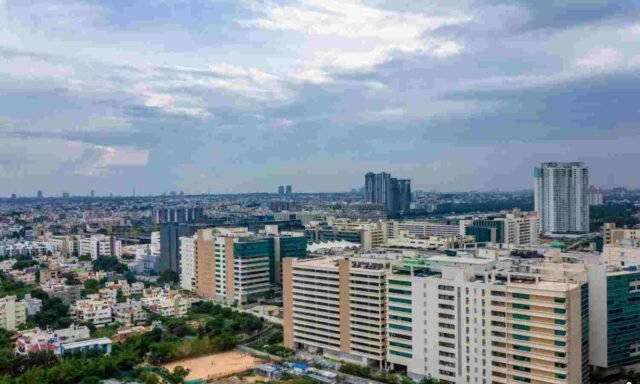Leasing volume in India’s industrial and logistics sector increased by around 40 per cent year-on-year in the first quarter of 2025, with total space take-up across eight major markets reaching 12.1 million square feet, CBRE South Asia Pvt. Ltd. reported Thursday.
The CBRE India Market Monitor Q1 2025 study tracked leasing in Delhi-NCR, Bengaluru, Mumbai, Hyderabad, Chennai, Pune, Kolkata and Ahmedabad. Combined activity in these hubs rose from 8.7 million square feet in Q1 2024 to 12.1 million in Q1 2025, reflecting wider uptake of warehouse and distribution space.
Delhi-NCR remained the single largest market, contributing 3.7 million square feet, or roughly 30 per cent of total leasing. Hyderabad followed with 1.9 million square feet (about 15 per cent), and Bengaluru accounted for 1.7 million square feet (around 14 per cent). Together, the three markets represented nearly 60 per cent of all space absorbed.
Pune and Chennai recorded 1.6 million square feet (13 per cent) and 1.0 million square feet (8 per cent), respectively. Kolkata accounted for 0.9 million square feet, while Mumbai and Ahmedabad each registered 0.7 million square feet.
Third-party logistics operators led demand in Q1, securing 31 per cent of total leasing. E-commerce firms held 28 per cent of space commitments and saw leasing volume more than triple compared with the same quarter last year. Manufacturing and engineering companies took 17 per cent of new leases. Automotive and ancillary businesses accounted for 8 per cent, and fast-moving consumer goods occupiers represented 5 per cent of quarterly leasing.
Landlords added 12.4 million square feet of new supply between January and March, a 57 per cent jump from the year-earlier period. Institutional investor-backed developers were responsible for the bulk of completions. Mumbai, Bengaluru and Chennai combined to contribute 69 per cent of new inventory, reinforcing their positions as core industrial and logistics nodes.
Anshuman Magazine, Chairman and Chief Executive Officer for India, South-East Asia, Middle East and Africa at CBRE, said leasing and supply volumes in the sector continue to rise as occupiers increase commitments for distribution centres and warehouses. He noted that demand from both logistics service providers and online retailers has underpinned quarterly growth.
Ram Chandnani, Managing Director of Advisory and Transaction Services for India at CBRE, said the first quarter’s leasing pattern confirms stable market fundamentals and points to sustained investment from both domestic and global occupiers. He added that interest from corporate users in Europe, the Middle East and North America underscores India’s evolving role in regional supply chains.
Looking ahead, CBRE expects leasing momentum to extend through 2025. The firm projects ongoing expansion of e-commerce space requirements, particularly for rapid-delivery operations, and continued dominance by third-party logistics companies. The report also anticipates diversification of occupier profiles, with sectors such as manufacturing, fast-moving consumer goods and automotive showing incremental leasing interest.
Supply additions by institutional investors are likely to increase as developers respond to occupier requirements for centres that meet governance, design and technology benchmarks. CBRE forecasts that completed projects with built-to-suit components and multi-user facilities will command a larger share of total new supply in coming quarters.
The Q1 2025 figures mark a continuation of the sector’s upward trajectory since the second half of 2023, driven by policy incentives, infrastructure upgrades and rising penetration of online retail platforms. As new warehousing capacity becomes operational, market participants are monitoring rental trends and vacancy levels for indications of balance between supply and demand.
Despite rising interest rates in financial markets, industrial and logistics rents in most major cities have held steady. CBRE’s analysis shows that occupier rents in Delhi-NCR, Bengaluru and Hyderabad moved within a narrow band in the quarter, suggesting that leasing growth has kept pace with new deliveries.
With distribution networks expanding and companies sharpening inventory strategies, the report concludes that demand for high-specification space will maintain leasing volumes at elevated levels. CBRE recommends that investors and occupiers continue tracking sector metrics, including take-up by category, supply completions and rental movement, to align decisions with market shifts.






